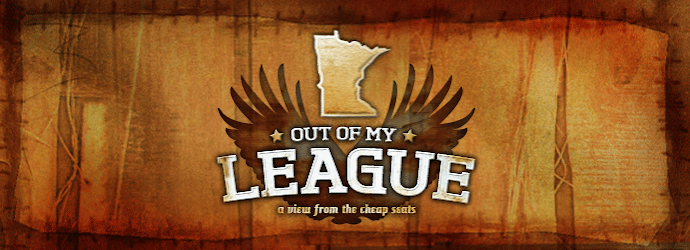By Joey Cavalier
Kevin Love is having a sensational season. Any honest person who watches the NBA should acknowledge that Love is one of the NBA’s best players. He is currently doing things that few players are capable of doing.
Over the last couple of months, a debate has sparked about whether Love is worthy of MVP consideration. Analysts, writers and fans of the game have taken sides, gathered up their ammunition and battled with the opposition.
While I certainly have my personal opinion on the matter, I would like to take a step back, and just appreciate Kevin Love for what he is accomplishing, and for the type of player he is becoming.
For starters, let us take a look at what Love is doing statistically:
- 26.5 points per game (4th the NBA)
- 13.6 rebounds per game (2nd)
- 101 three-pointers made (tied for 5th)
- 360 free throws made (1stt)
- 1st in the NBA in points/assists/rebounds per game with 42.0
- 45 double-doubles (1st)
- 28.9 efficiency rating per game (2nd)
- Leads the league with 10 games of 30 points and 15 rebounds (the rest of the NBA has just eight combined)
- Currently shooting 45% from the field, 39% from three territory and 82% from the free throw line
- Love is the only player in league history to lead the league in scoring, rebounding, and three-pointers made in a calendar month (he did it this past March with 30.7 PPG, 13.9 RPG, 48 3PM)
- Lastly, here is a little quote from Bill Simmons of Grantland.com to finish the Love stat session, “Fact: Neither Tim Duncan, Kevin Garnett, Charles Barkley, Chris Webber, Larry Bird nor Karl Malone ever averaged 27 points and 13 rebounds per game in the same season”
Love currently sits at 26.5 points and 13.6 rebounds per game… Enough said.
The numbers only tell us what Love has already proven: that he is one of the most dominant and versatile players in the entire league. His low-post game has become an absolute nightmare for defenders, his mid-range game is flat out deadly (especially with his recently acquired step back jumper and Tim Duncan-esque bank shot), and his perimeter game is among the best in the league. Offensively, Love can dominate from anywhere on the court, and few big men execute the pick and roll as well as he does. He also makes a habit of hitting clutch shots, he viciously attacks the rim, and he gets to the charity stripe often. Love’s offensive game is as polished as they come. Whether people are ready to accept it is another matter.
Love’s defense has also been improving (though many still believe that he is an awful defender). Love is not—and may never be—an elite shot blocker, but that is not all there is to defense. He displays solid effort on the defensive end (which is the majority of the battle), he’s getting his arms up to distort/contest shots and he clogs the lane when his number is called. Plus, Love is second in the league in defensive rebounds per game (which is still a defensive stat). Love does not get tossed around by opposing big men like he used to. He still needs to improve defensively, but he is only 23 years old. With his top-notch work ethic, you can definitely count on Love continuing to grow in this area of his game.
At this point the Love-detractors will likely ask, “Well, if Love is so good, why do the Timberwolves suck?” There are many things that play into that question. First, I would like to point out that the Wolves had the worst record in the NBA just one season ago, and are now one of the most improved teams in the league (largely because of what Love is doing on the court). Also, keep in mind that the Oklahoma City Thunder sucked for some time even though Kevin Durant was putting up nasty numbers. Kevin Durant is pretty good, right? They sucked for two years even with Durant playing well. But now that other pieces were added to the mix (i.e. James Harden and Russell Westbrook), and they were given time to grow together, they are now one of the league’s most frightful teams. And lastly, what more can you ask of Love and the Wolves at this point? Their second best player, Ricky Rubio, is out for the year with an ACL injury. Their third best player, Nikola Pekovic, has been banged up down the stretch. Michael Beasley and J.J. Barea (who are important players off the bench) have missed serious time with injuries, and now Luke Ridnour is out with a nasty ankle sprain.
Love is playing at a different level, but he needs good-to-great players around him just like every other superstar across the league does. The Wolves simply do not have that going for them at this point. But come next year, as Derrick Williams improves, as Rubio gets healthy, and as Pek’s game continues to grow… watch out.
So whether or not you think Love is worthy of being the MVP, you just need to respect what he is doing on the court, and look forward to the player that he is becoming. And at 23 years of age, one can only imagine just how good Love can and will be.








